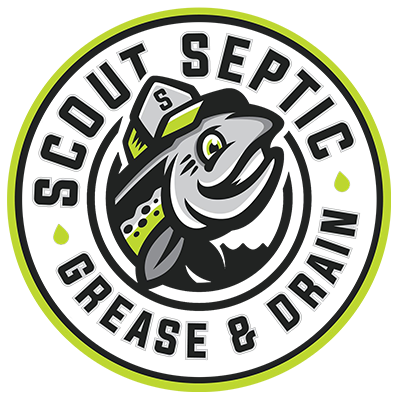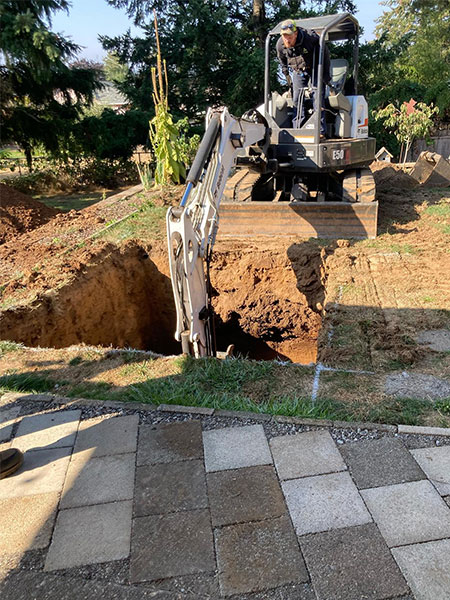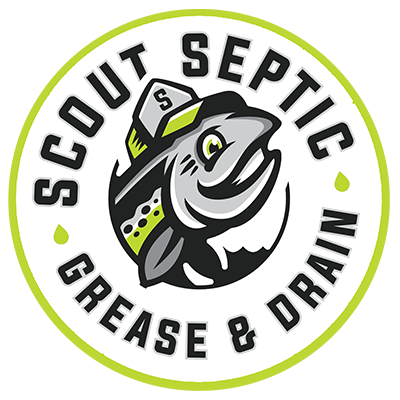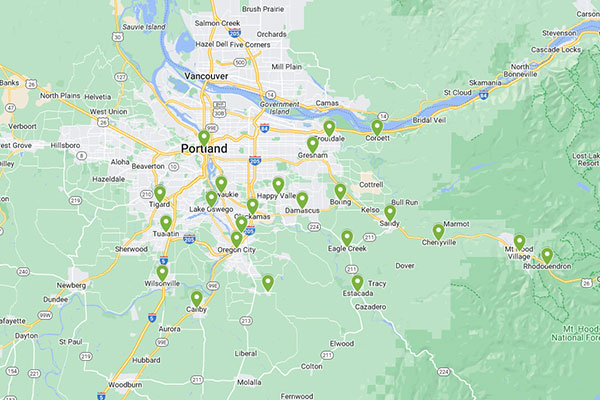Frequently Asked Questions
How Should A Rendering Company Service My Grease Interceptor?
Hydromechanical Grease Interceptor (HGI)
Management should inspect service before driver closes lid and leaves the site.
Open, check inspection port for FOG bypass with water running through HGI
Clean inspection port
Vacuum out all FOG and food debris
Scrape sides and lid (remove all 3D debris)
Take out baffle and scrape clean
Pour water down sides to flush waste to bottom for pump out
Management inspects for quality of service before it is filled with water and closed
Gravity Grease Interceptor (GGI)
Management should inspect service before driver closes lid and leaves the site.
Open, check outlet tee for FOG bypass
Begin vacuuming the entire GGI of all its contents to the rendering truck.
Scrape FOG build-up from the walls of the GGI.
Pressure wash all FOG material to the floor of vault (walls, fittings) and vacuum into truck.
There should be no visible FOG material on any surfaces
Inlet/Outlet tees along with all piping inside of GGI should be very clean.
Management inspects quality of service when done.
All Grease Interceptors
FSE or Preferred Pumper must submit service schedule 7 days prior to maintenance performed
FSE or Preferred Pumper note any repairs needed on FOG report.
FSE or Preferred Pumper note FOG level and food solids level on FOG report.
FSE or Preferred Pumper submit FOG report within 10 days
Preferred Pumper
The Preferred Pumper list is made up of companies that have signed agreements to uphold a performance standard Preferred Pumper Program Standards (PDF, 44KB).
How Can I Be Sure I Am In Compliance With The Rules?
Effective maintenance is removing the accumulated contaminates before the FOG storage capacity is filled, preventing unacceptable levels of FOG bypass.
All food/beverage service area F&D are connected to a grease interceptor.
FSEs or Preferred Pumpers shall provide a maintenance schedule 7 days prior to service.
FSEs must keep records of service for inspection (Preferred Pumpers provide this service).
FSEs or Preferred Pumpers must submit all required reports within 10 days of service.
What If I Don’t Install A Grease Trap?
Clean Water Services FOG Protection Requirements (PDF, 69KB)
Grease Interceptor Tips (PDF, 22KB)
Oregon Plumbing Specialty Code (Chapter 10 Traps and Interceptors, PDF, 107KB)
R&O 09-1 (PDF, 1.5MB)
Code of Federal Regulations (section 403.5 National pretreatment standards: Prohibited discharges)
Control Authority Contact Map (PDF, 364KB)
Do I Have A Grease Interceptor?
If you are unsure at all call Matt at (503) 563-2061or the appropriate municipality FOG Manger
Food Service Establishments (FSEs) are required to have an appropriately sized and effectively maintained grease interceptor which protects the Public Owned Treatment Works (POTW). A grease interceptor not effectively maintained or not having a grease interceptor may be putting your FSE at risk for sewer back-ups and/or contributing to cause interference with the POTW. Federal, state and local regulations clearly assert interference, which includes a Sanitary Sewer Overflow (SSO), is classified as a violation of the Clean Water Act. Enforcement actions may have the FSE/Property owner pay for all costs involved which will include fines.
What Are The Different Types Of Grease Interceptors?
The food/beverage service industry utilizes two main types of grease interceptors. Grease interceptors need to be installed so all areas in contact with wastewater can be maintained and visually inspected.
Reminders
FOG storage capacity will determine long term maintenance costs.
Capital costs (short term) -vs- Maintenance costs (long term)
Grease Removal Device (GRD) is also a U.S. EPA term used to describe all grease interceptor types.
Grease Interceptor Types
Gravity Grease Interceptor (GGI) is the large vault (concrete, plastic) with at least two internal chambers and installed outside. This grease interceptor allows the velocity of wastewater discharge not to slow down until it reaches the first chamber, the inlet bay, for processing (retention time). The inlet bay is where FOG and food solids separate from the gray water. The inlet bay is also where these contaminates are captured/stored (FOG storage capacity) until maintenance service is completed. The gray water then continues on to the second chamber for further processing unless it is the final chamber, the outlet bay. The outlet bay is not intended to capture/store FOG, but to provide an indicator of service needed to comply with the Local Sewer Use Ordinance. A GGI’s FOG storage capacity is the largest available.
Hydromechanical Grease Interceptor (HGI) is smaller equipment (plastic, metal). This HGI uses an internal baffle system with flow control to hold waste water in the building sewer until the HGI has time to process (retention time) FOG and food solids from the gray water. This creates added FOG abatement costs by increasing building sewer maintenance. There have been recent advances in HGI design. Improved features:
Less reliance on flow control, which means less or no building sewer maintenance
Larger FOG storage capacity, which means less frequent pumpout as compared to old design.
Easy access for maintenance and visual inspection for FSE/Property owners
What Is A Grease Interceptor? How Does It Work?
Grease Interceptor is an overall term, a product category like faucet or window. A grease interceptor is equipment connected to the building sewer that captures the wastewater discharge from the food/beverage service area fixtures and drains (F&D). This equipment is made up of a baffle system intended to slow the wastewater discharge long enough (retention time) for the FOG and food solids to separate from the gray water. The FOG floats to the top; the food solids sink to the bottom; and both contaminates stay in the FOG storage capacity allowing gray water to pass through to the public sanitary sewer system. The gray water discharge travels through conveyance (pipes/pump stations) and on to a wastewater treatment plant for processing. Contaminates stored in the grease interceptor have the potential for resource recovery.
Do I Need A Grease Interceptor?
Yes, if your facility qualifies as a Food Service Establishment (FSE), as defined in the Oregon Plumbing Specialty Code (OPSC): “A facility that engages in activities of preparing or serving food or beverage for consumption either on or off the premises, including but not limited to restaurants, cafes, commercial kitchens, caterers, hotels/motels, schools, hospitals, prisons, correction facilities, nursing homes, care institutions, and any other facility preparing and or serving food/beverage shall have a Pretreatment system (Grease Interceptor) to protect the public sewer.”
What FOG Best Management Practices (BMPs) Protect Storm/Surface Water?
Keeping wash practices in areas that are protected from rainwater and where the wastewater drains to a grease interceptor.
Preventing spills of oil waste being transferred to an outside oil waste bin.
Designing a trash enclosure with a roof, a water source, and a drain connected to a grease interceptor





